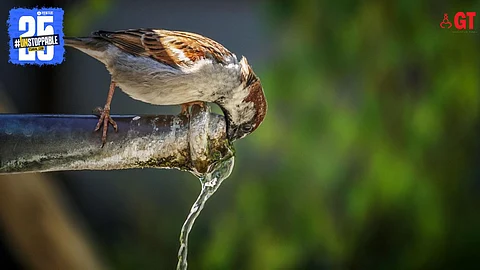

Water has always been at the heart of everything – right from civilisations being born or destroyed, festering conflicts, deal-breaking or deal-making and much more.
It can also be used by nations as a tactical weapon to bring their opponents to their knees, as is being attempted by India by suspending the Indus Water Treaty with Pakistan after the deadly attack by terrorists in J&K’s Pahalgam, which took 26 lives.
In that sense, Goa, for now, is sufficiently armed with abundant water that flows in its 11 rivers and 42 tributaries. The Central Water Commission (CWC) and Central Ground Water Board (CGWB) have estimated the State’s water resources at 8,570 million cubic meters (mcm).
At first glance, this quantity of water may seem more than adequate for a place with an area of 3702 sq km and a population of 15.96 lakh (as projected by Goa Economic Survey for 2024-25).
The devil is in the details – water authorities have assessed that even though Goa’s total surface and groundwater resources look robust, it’s topography and geography limit its utilisability to 1,465 mcm.
Today, close to 23.63 per cent of the total extractable groundwater is being extracted to meet the State’s demand. A large portion of this is consumed by domestic users (56 per cent), followed by farmers for irrigation (37 per cent) and industrial users utilise 7 per cent.
Goa’s total surface and groundwater resources look robust, it’s topography and geography limit its utilisability.
And, as Goa chases development dreams, and as people from outside look to buy real estate in the environmentally clean State, the pressure on its water resources is mounting. Already, it is falling short by 85 million litres per day (MLD) to meet its need of 645 MLD of water compared with availability of 560 MLD.
To unpack the adverse impact of indiscriminate real estate development on Goa’s water resources, one has to take a closer look at the data published by Goa’s Real Estate Regulatory Authority (RERA).
The regulatory body began compiling data on the State’s property after the launch of its online registration portal in 2018. Its Management Information System (MIS) report reveals a total of 31,258 apartments, 3,639 villas and 3,687 plotted developments have been registered since its portal went live.
What draws your attention is very few of the total number of projects that came up for registration have been rejected, withdrawn or cancelled. Most of them pass the muster. Of the 1,525 registration requests received by RERA, 1,383 were approved.
Here, it would be pertinent to ponder on whether availability of potable water in an area is ever considered by authorities while giving a nod to a real estate project. RERA data shows that, for the period between 2018 and 2025, the number of projects rejected were 29 while another 29 projects were withdrawn and 19 were cancelled by applicants.
Projects rejected included Tiger, Gera Imperium Prenio, Joao Crisostomoo Pereira, Empire Heritage, Margao Trade Centre, Assagao Envy, Mohidin’s Hamlet by the Bay, Vista Da Montanha, Raj Central, and Shivani Upavan, among others.
It should be made mandatory for the Goa’s Water Resource Department (WRD) and Public Works Department (PWD) to do due diligence on water requirement and its availability for a proposed project
Reasons stated by the RERA for not approving these projects are; “dummy entry”, “insufficient documents”, “not complied with inquiries and orders issued by the Authority” and others.
It should be made mandatory for the Goa’s Water Resource Department (WRD) and Public Works Department (PWD) to do due diligence on water requirement and its availability for a proposed project in the area it will come up before it gets a nod of approval from authorities.
The rate at which the State’s real estate sector is expanding, the gap between the demand and the supply of water resources is sure to further widen. As per official data, Goa’s residential water consumption per capita is 170 litres per person per day for urban household and 70 litres per person per day for rural households.
The quantity of water consumed per household could see a huge jump with the rapidly rising rate of migrant population and massive investments in properties around Goa. Some signs of the looming water crisis are already staring us in the face.
Recently, statistics shared by the State government showed just 26.5 per cent of households received round-the-clock piped water supply. We must not ignore the writing on the wall.
Let’s read it and do something about the ‘unbridled’ development of the State’s real estate sector before we find ourselves in deep water.